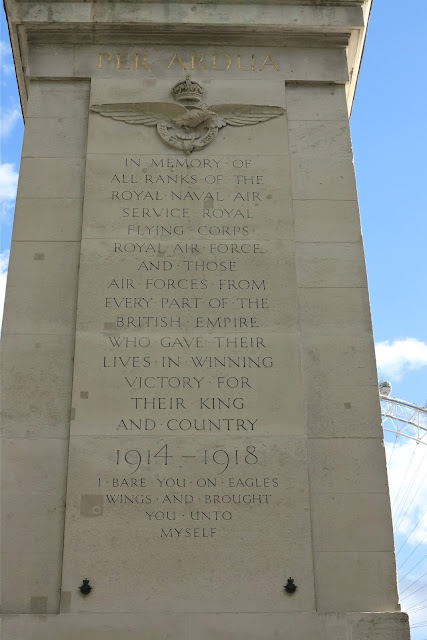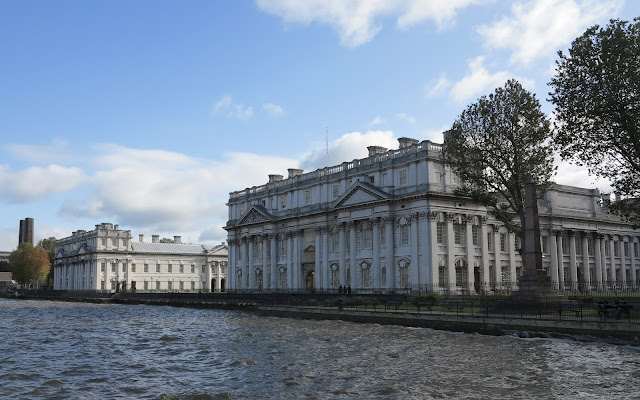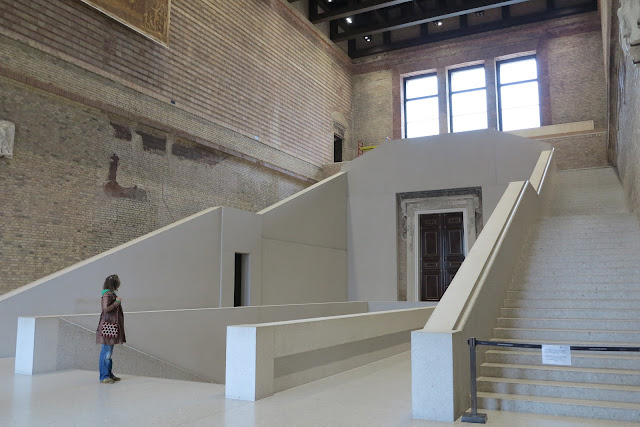Back in the Spring I decided that I would want to
get away from London for a few days once the 2012 Games were over. So, where to go? For many years I’ve been hearing
about Berlin, how it has regenerated and rejuvenated, about the new architecture,
a place to which artists and young creatives have been drawn, and most of all a
place loaded with 20th century history. Here is my photo blog of a busy week in a most
enjoyable city. There are more photographs here.
Perhaps the best place to start a visit to Berlin
is the viewing platform at the Fernsehturm, the tv tower. At 670 feet, you get
great views out over the city and can quickly orientate yourself. It’s popular, there are queues for
the lifts, but once up top you can stay as long as you like, and there is a bar
and café up there too.





The Reichstag is the German Parliament building, and a place
of great significance in the city.
It was built in 1894, severly damaged by fire in 1933, damaged again during
the war, and then stood unused for years. Partial repairs were made in the 1960’s,
while Parliament met in Bonn.
After reunification in 1990, British architect Norman Foster
won the commission to rebuild it as the home of the German Parliament. It
opened in 1999, with an almost complete new-build inside the old facades. It is now the second-most visited
building in Germany, with most people drawn to the vast dome or cupola from which there are good views across this part of the city. Anybody
is free to visit, but you must book online some days in advance to allow
scurity checks. It is a fine piece of work, in both concept and execution,
Foster at his best. We forget now
how ground-beaking his earlier work was.
 |
| 'Dem Deutscher Volke' For the German People |
 |
| Mural created by the the biggest German labour union as a symbol for a statutory minimum wage |
 |
| Angela Merkel's office building |
 |
| Contrary to rumour it isn’t possible to see into the parliamentary chamber from up on the roof. TIP: When you go back down to reception to leave the building, try to linger for a moment and look through the several layers of thick security glass: you can see see into the chamber if it is in use |
Seen around Berlin
 |
| School, Gitschiner Strasse |
 |
| I had lunch here: Fräulein Wild, Dresdener Straße |
 |
| Dresdener Straße |
 |
| OranienPlatz |
 |
| OranienStrasse |
 |
| OranienStrasse |
 |
| Cafe am Neuen See, Tiergarten |
Two Banhofs
Berlin Hauptbahnhof Central Station, opened in 2006 and is a fine space. Even more impressive is that the tracks and platforms arrive into the building at second-storey level.
Just 500 metres south, is Hamburger Bahnhof, a former railway station which has gone through several incarnations since its construction in 1847. It is now a splendid museum of contemporary art, part of the national gallery.
 |
| 'Chairman Mao' by Andy Warhol |
 |
| Andy Warhol |
 |
| Roy Lichtenstein |
The Memorial to the Murdered Jews of Europe,
known as the Holocaust
Memorial, is a memorial to the Jewish victims of the Holocaust. It is situated close to the Brandenburg
Gate, right beside the US embassy.
Designed by American architect Peter Eisenman, it is a 4.7 acre
site covered with 2,711 concrete slabs or stelae, laid out in a grid pattern on
a sloping field.
These
stelae all have the same footprint but vary in height. The architect intends that they produce
an uneasy, confusing atmosphere, and the whole sculpture aims to represent a
supposedly ordered system that has lost touch with human reason. It was inaugurated on May 10, 2005,
sixty years after the end of World War II, and opened to the public two days
later.
 |
| Holocaust Memorial. architect Peter Eisenman |
 |
| The memorial is a 4.7 acre site, covered with 2,711 concrete slabs |
 |
| Holocaust Memorial. architect Peter Eisenman |
Museum Island is exactly that: a large
island in the centre of Berlin lying in the river Spree, and home to five grand
Museums.
One of those, the Neues Museum, is
150 years old, and suffered extensive damage during the war, which left it
largely in ruins, with roofs and whole wings missing. In the years that followed little effort was made to repair
or even protect the remains. In 1997 British architect David Chipperfield,
teamed with restoration specialist Julian Harrap, won the competition to
rebuild.

Their approach was “restoration and
repair” - to focus on restoring the buildings, respecting the original concept. In places the damged plaster has been
removed back to brickwork, which if sound, is left exposed. Columns, walls, vaults, are repaired
wherever possible, with new work seen as the last option. Where new rooms and
galleries are constructed, they sit within the old spaces, and are built from
prefabricated concrete mixed with stone and marble chips visible. The major set-piece (as featured in all
the architectural press) is the new grand staircase, made from the same
concrete, sitting within a great hall, finished in bare brick, with scorch
marks still showing on the columns.
In almost every space, at every turn,
one sees evidence of the original building’s structure and finishes, and of the
war and weather damage. It sounds like an odd concept, but it works extremely well. I loved it.
The building
reopened in 2009, but work continues outside the main building to create a new
entrance. David Chipperfield has
now been commissioned to masterplan the whole of Museum Island.

Chancellor Angela Merkel deemed the completed project "one of the most important museum buildings in European cultural
history." Chipperfield was awarded a knighthood in
2010 for his services to architecture both in the UK and in Germany.
Interestingly, just across the water
from the Neues Museum, on Am Kupfergraben, is another Chipperfield building, this time
a new one - see below. It is an art gallery, a
private commission, completed in 2007. The façade is of salvaged bricks pointed
with slurry.
Seen around the city
 |
Oberbaumbrücke (Oberbaum Bridge). In
April 1945 the Wermacht blew up the middle section to stop the Red Army from
crossing. After the war ended Berlin was divided into four sectors, and the
bridge linked between the American and Soviet sectors; pedestrians and
vehicles could cross without difficulty. When the Berlin Wall was built in 1961 the bridge became
part of the east’s border with west Berlin. After the opening of the Wall in 1989, and reunification the
following year, the bridge was restored to its former appearance, with a new
steel middle section by Spanish architect Santiago Calatrava.
|

 |
| The German Resistance Memorial Centre, Stauffenbergstraße |
The Berlin Wall. There are several sites in the city where you can see some of the former Berlin Wall, the most famous (and most crowded) being Checkpoint Charlie. To the north east, and away from the crowds, is a sizable area running along Bernauer Strasse, where large parts of the wall remain, other fortifications are in place, and some have been faithfully reconstructed. It is a place loaded with recent history for all of us, and difficult memories for Germans.
 |
| Berlin Wall, east side, at Bernauer Strasse |
 |
| Young people study the history of the wall (in the background). Some may not have been alive when the wall came down, only 23 years ago |
 |
| Line of Berlin Wall marked by steel posts. The Reconciliation Chapel stands in the centre |
 |
| Berlin Wall at Bernauer Strasse. Watchtower and no-man's land |
 |
| The gable ends of houses formerly in the east now carry murals and historical photographs |
Seen around Berlin. The Feuerwache (Fire Station), Wiener Straße, Berlin
The Jewish Museum opened in 2001, in two
buildings: the 18c courthouse Kollegienhaus,
and a large new building of 15,000 sq metres, designed by Daniel Libeskind and
opened in 2001. Millions have
visited it, and parts of the content I found illuminating and quite moving. But the curators and exhibition designers
have to struggle to tell their story against very dominant architecture, which
makes few concessions to the displays.
I don’t like the building, but still pass three hours here engaged with the content.
 |
| Kollegienhaus |

 |
| This wall plan gives some idea of the internal layout and flow through the new Libeskind building |
 |
"The Axis of the Holocaust slopes gently upward to an empty,
24-metre high space called the Holocaust Tower. It is unheated and lit only by natural light falling through
a diagonal opening in the wall.
Sounds can be heard from outside.
Daniel Libeskind called this room the “voided void”. It was later interpreted as a
commemorative space for the victims of the Holocaust. Libeskind’s architecture continues to be open to entirely
different, personal interpretations."
|
 |
| Of course, as the museum reflects many aspects of Jewish life, including the domestic, one comes across settings like this, which are a surprise to find in such a harsh and dominant building |
Some views of Berlin street life
 |
| Ackerstrasse, Berlin |
 |
| TorStrasse, Berlin |
 |
| NovalisStrasse, Berlin |
 |
| An American school bus (ex California) makes a good street-side diner on Friedrichstrasse |
 |
These brass blocks, set in the
cobblestones, are called stolpersteines (stumbling stones). These
are on Friedrichstrasse, laid in front of the house in which these five
people lived, and there are now many thousands laid across Germany. They were created
by artist Gunter Demnig, as ‘A
project that preserves the memory of the expulsion and extermination of Jews,
Gypsies, the politically persecuted, homosexuals, Jehovah’s Witnesses and
victims of euthanasia under National Socialism.’
|
 |
| The Spree, Berlin, September 2012 |
Heading back to my hotel I pass the Kaiser
Wilhelm Memorial Kirche, on Breitscheidplatz. I’ve read about this and had
intended to visit on my last morning, when I’ll have a couple of hours to spare
before getting the plane, but hearing choral music, and seeing a notice about
an open rehearsal, I wander in. It
is impressive. Designed in the late 1950’s by architect Egon Eiermann, it replaces
a war-ruined former church on the same site. Only the tower of that remains,
and it is currently clad in aluminium whilst repair work takes place.
The new building is octagonal, quite small,
lit through 22,750 tiny windows of blue glass, a simple altar, and a raised
(almost floating) choir and organ.
There is a rehearsal of Bach cantatas underway, which sound gorgeous.
Disappointingly, the outside of the church
is surrounded by market stalls and street traders. Given the wide pavements
around here, there’s plenty of room in the area for them: what a shame they are
set right up against the church.
 |
| Market traders back onto the church |
The 39th Berlin Marathon is one of the Big Four of world marathons, and a reported £1m prize fund attracts all the star runners. Over 40,000 take part and several GB athletes I spoke to commented on how easy it is to apply, compared to London, how well organised, and what a fast course it is. The east Africans dominate, with 9 out of 10 of the first men to cross the finish line coming from Kenya.
 |
| Geoffrey Kipsang, Kenya, finished 3rd. |
 |
| Eliud Kiptanui, Kenya, finished 8th |
 |
| Aberu Kebede, centre, Ethiopia, the first woman to cross the finish line |
 |
| I don't know who this is but I'm pleased with the photo |
 |
| Richard Six, Austria, snaps himself. He finished 3,151st |
 |
| It is reported that 1 million people turn out to watch the marathon |
 |
| Andrew Green, Great Britain, finished 25,138 |
 |
| 12592 is Robert Hawthorne, 35952 is Jim Semple, both GBR |
 |
| Mark Hitschmann, Chorlton Runners, GBR |
 |
| Alistair and Martina Jury, from Winchester. They crossed the finish line together in 5 hours 37 |
 |
10 Marathon runners show off their medals
|
Architecture around Berlin
 |
| British Embassy, Berlin. Architect: Michael Wilford 2000 |
 |
| DZ Bank, designed by Frank Gehry, possibly his most reserved building. A great contrast with his famous Guggenheim in Bilbao, and concert hall in Los Angeles |
 |
| Am Kupfergraben 10, private art gallery, by David Chipperfield |
 |
| Interesting brickwork and pointing at Am Kupfergraben 10, by David Chipperfield |
|
 |
| Neue Nationalgalerie, designed by Mies van der Rohe 1968. It was recently announced that David Chipperfield Architects have been commissioned to renovate this building |
 |
| Neue Nationalgalerie, designed by Mies van der Rohe 1968. |
 |
| St Matthäuskirche. Architect August Stüler 1846, reconstructed 1960 |
 |
| The skyline towards Potsdamer Platz, almost entirely new-build from the 1990's, to a masterplan by Hilmer & Sattler. Individual zones were handled by such architects as Renzo Piano, Richard Rogers, and Helmut Jahn, whose swooping roof is visible to the left |
 |
| Berliner Philharmonie, 1963, designed by Hans Scharoun. Musicians acclaim the acoustics, and architects, believing it to be the best concert hall in the world |
 |
| Berliner Philharmonie: The seating plan shows the asymetrical audirorium |
 |
| Nordic Embassies: Denmark, Finland, Iceland, Norway, Sweden. Each used their own architect, but the whole mini-campus works well together. |
 |
| Embassy of Mexico, Berlin. Architect Francisco Serrano with Teodoro González de León. 2001 |
 |
| Saudia Arabian Embassy Berlin. NF Architects / BCB Bartels Consult with Braun & Schlockermann und Partner |
 |
| Japanese Embassy. Orginally constructed during the Nazi era. Heavily damaged in WW11, reconstructed in 1980's. |
 |
| Badem-Wurttemberg. Architekturbüro Dietrich Bangert, 2000 |
 |
| Austrian Embassy. Architect Hans Hollein, 2001 www.en.structurae.de/structures/data/index.cfm?id=s0005219 |
 |
| Egyptian Embassy. I wonder how they get daylight in as there are no windows apparent |
 |
| Bauhaus Archive, Berlin |
 |
| Turkish Embassy, Berlin. Nickol Schmidt Hillig Architects 2012 |
Fat Tire Bike Tour
It is really easy to cycle in Berlin: there are no hills, plenty of cycleways, wide roads and considerate drivers. I spent much of my last day on a tour of the city organised by Fat Tire Bike Tours It's a great way to see the city, learn some of its history, and generally get your bearings. I should really have done it on my first day rather than my last.
 |
| Guide Craig briefs us on what we'll be seeing over the next five and a half hours. There are about twenty of us in this group. |
 |
| And the children can join the ride too |
 |
| Checkpoint Charlie |
 |
| Riding through the Tiergarten |
 |
| We took our lunch break in the beer garden in the Tiergarten. |
 |
| The official residence of the German President |
 |
| The Culture House, formerly the Kongresshalle, a gift from the gift from the United States, architect Hugh Stubbins 1957. Standing in the water is Henry Moore's bronze sculpture, Large Divided Oval: Butterfly |
 |
| A pause at the Reichstag |
 |
| Our last stop is at the Brandenburg Gate |
So that’s it: my six-day look at Berlin. I seem to
have crammed in a lot, but at the time didn’t feel hectic or rushed. The weather was good, everybody I met
spoke English, I lived within my budget, the dark beer was a discovery, and I liked
the fact I could get the Guardian each morning at the train stations. At just 90 minutes flying time from
London it’s a great alternative to Paris, Amsterdam or Bruges. If you want to
see more photos, they are here.



































































































































